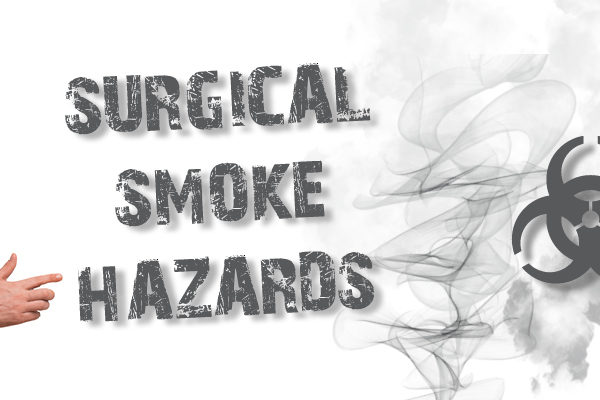The same principles that apply to any electrosurgery procedure apply to electrosurgery for dermatology. The electrosurgical procedure involves using a special device, often simply called a “Bovie” after the man who invented it. The device cuts, desiccates (dries the area), coagulates (forms blood clots) and fulgurates (destroys and removes) tissue.
There are so many dermatology procedures that respond well to electrosurgery that dermatologists generally use it every day. The benefits of the procedure are numerous. Procedures are performed under local anesthesia, often without the need of an assistant. The use of electrosurgery has been tied to less bleeding during the procedure which reduces complications, promotes rapid healing and minimal scarring.
Free eBook: Addressing Surgical Smoke in the Operating Room
A few of the most common electrosurgical dermatology procedures include the following:
Removal of skin lesions
An article published in Dermnetz, indicates that curettage and electrosurgical cauterization is the recommended procedure for removing most types of skin lesions. Curettage involves scraping off the skin lesion, which may then be sent to pathology for analysis. Electrosurgery is used to coagulate the tissue to prevent bleeding and destroy any foreign cells that may still exist.
The procedure can be performed on an outpatient basis using local anesthesia. Patients may feel a pushing sensation or pressure, but should not feel pain during the procedure. Skin lesions that are commonly excised with electrosurgery are:
• Non-cancerous moles (Electrosurgery is not used for excision of suspected or confirmed melanomas)
• Common skin tags
• Warts
• Small basal cell carcinomas less than 0.2 inches in diameter
• Squamous cell carcinoma that is in situ
• Other miscellaneous lesions
• Seborrheic keratoses
Treatment of angiomas and pyogenic granulomas
Electrosurgery for dermatology procedures is the ideal method for removal of hemangiomas and pyogenic granulomas due to their vascular nature and tendency to bleed. With electrosurgery, the elevated portions of the lesions are shaved off and the area electrocoagulated. With this procedure, if there is any blood loss at all, it is minimal.
Electrosurgery for acne
Electrosurgery for dermatology is used to treat some types of acne. For example, there are several remedies available for comedonal acne, which involves blackheads and whiteheads located primarily on the forehead and chin. If other treatments fail and the condition persists, electrosurgery is recommended.
Scar revision is another use of electrosurgery for dermatology
The advantage of electrosurgery for scar revision is the ease with which the unwanted tissue is removed without the dermatologist having to put pressure on the skin. The area is simultaneously coagulated to reduce bleeding. The device can be directed so that surrounding tissue is not damaged.
References:
http://dermnetnz.org/procedures/curettage.html
http://www.webmd.com/cancer/curettage-and-electrosurgery-for-nonmelanoma-skin-cancer


